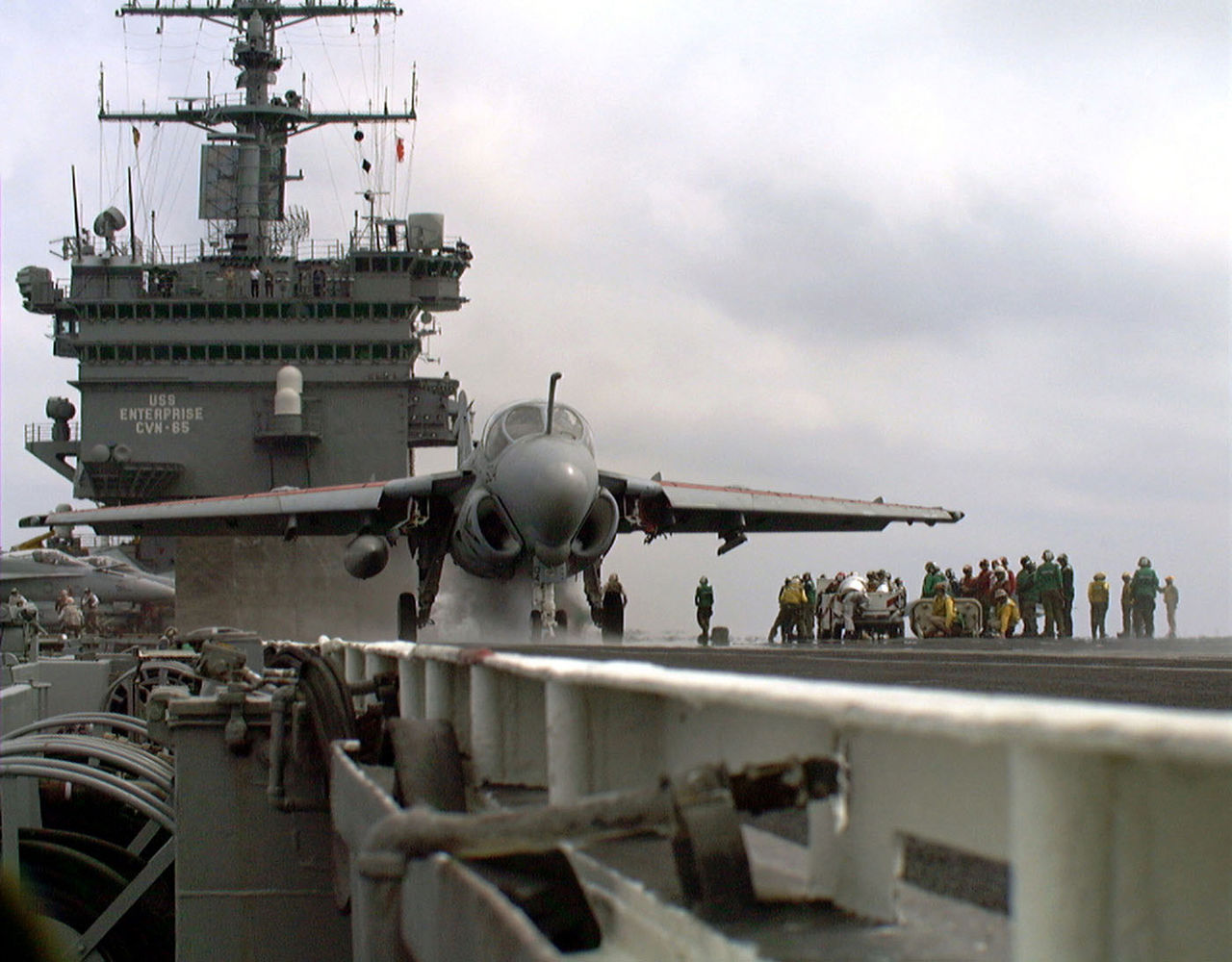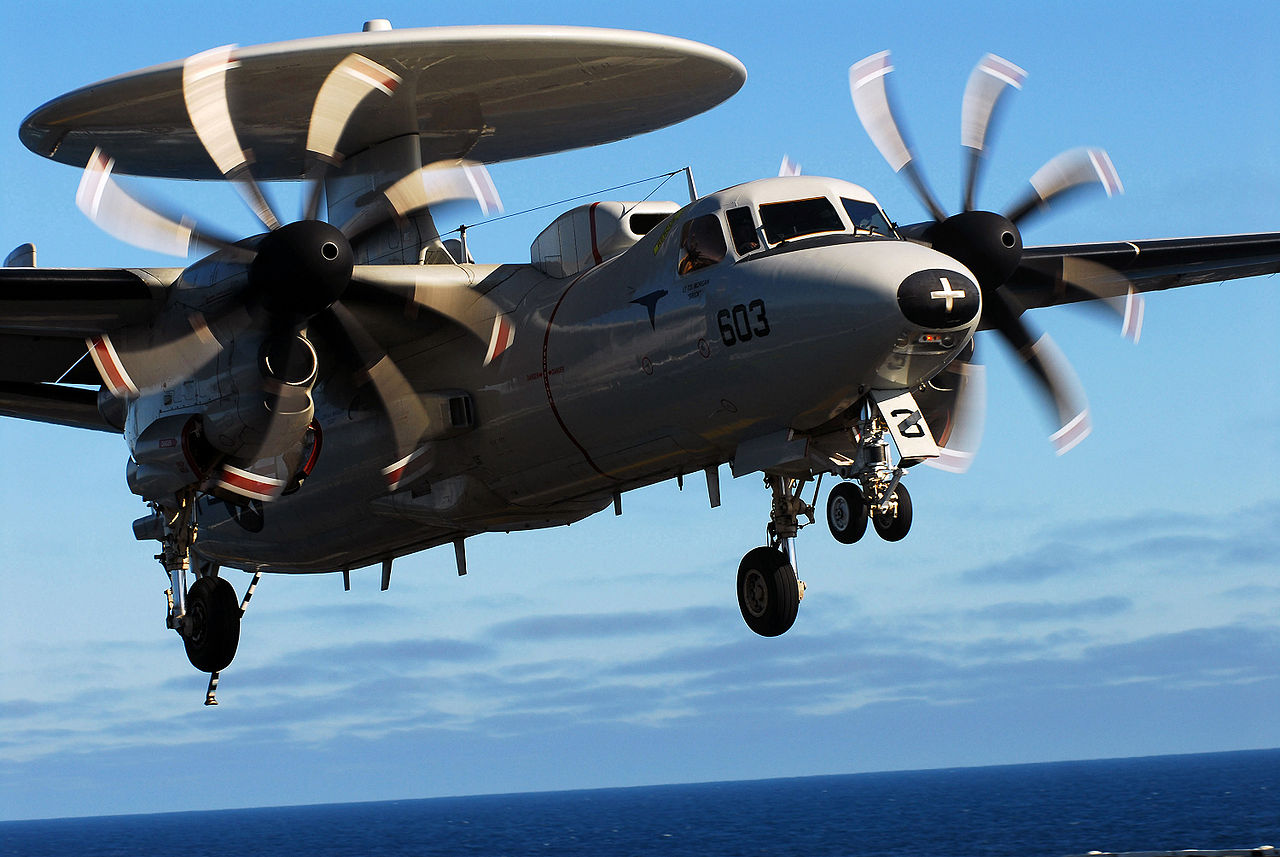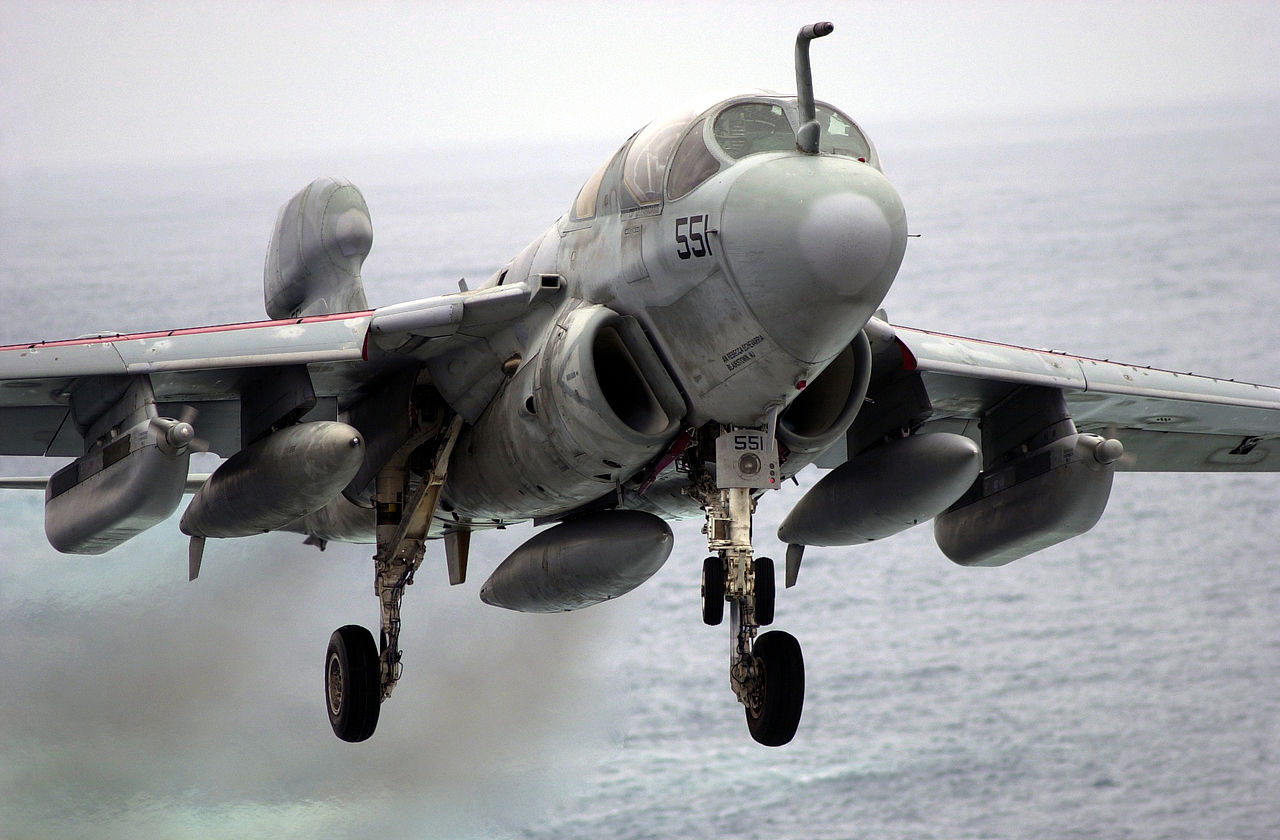‘It was a visual aid for the Landing Signal Officers, aka “Paddles,” pilots who are trained to observe and grade landing passes,’ Andy Burns, Flight Officer / Aviator at United States Navy.
Derived from the EA-6A “Electronic Intruder,” a relatively straight-forward modification of the A-6 Intruder, the EA-6B Prowler was a more advanced and significant redesign, making it a highly capable, long-range, all-weather electronic warfare aircraft. EA-6Bs became operational in the final years of the Vietnam War, and developed into the foremost electronic attack platform in the U.S. military arsenal, supporting combat missions over Iraq, Bosnia, and Afghanistan and in other crises around the world. The Prowler later underwent a number of upgrade programs, enhancing its ability to block enemy communications and sensors.
As shown by the main image of this post, the EA-6B had a very distinctive feature: “nuclear trefoil” painted on its nose.
Why did the Prowler have it?
‘It was a visual aid for the Landing Signal Officers (LSOs), aka “Paddles,” pilots who are trained to observe and grade landing passes,’ Andy Burns, Flight Officer / Aviator at United States Navy (1995-present), explains on Quora.

‘‘One of Paddles’ functions is to safety-check that the aircraft actually “in the groove” (on final approach) is the same type that the ship thinks it is. The type and fuel on board determine the weight settings for the arresting gear. The Prowler was developed from the A-6 Intruder and they appeared similar from a nose-on perspective, especially from a distance, but the EA-6B was much larger and heavier than the A-6 and thus needed a different weight setting.

‘The “trefoil” helped Paddles confirm visually whether it was a Prowler or Intruder in the groove.
‘Other aircraft used similar markings for the same reason, like different versions of the E-2 Hawkeye.


‘Once the A-6s were retired in the mid-90s there was no need for the marking on the EA-6s anymore, and most squadrons discontinued using it (as you can see in the pic below). But some continued to just out of tradition.’

Burns concludes:
‘If you’re asking why the “nuke” symbol, in particular, was used: the Prowler’s mission was an electronic attack, i.e., jamming radar and radios. You do that by pumping out a lot of electronic energy, which is after all just another form of radiation.’
Photo by U.S. Navy

